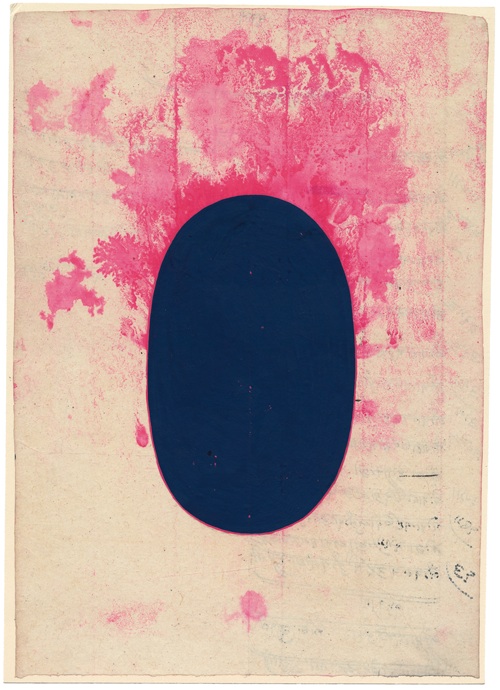Of all the world's amphibians -- some 7980s vintage eroticism films tubes600 species -- none had been confirmed to exhibit fluorescence, until now.
Scientists in Argentina and Brazil say they've found the first solid evidence of a fluorescent amphibian, courtesy of the South American tree frog.
SEE ALSO: Wild elephants get a lot less sleep than you doTheir findings, published Monday in the Proceedings of the National Academy of Sciences, offer clues into how this tiny tree frog survives in its environment. The study may also spur more research into fluorescence on land, a largely unexplored area within visual ecology.
 Original image has been replaced. Credit: Mashable
Original image has been replaced. Credit: Mashable Unlike in the depths of the ocean, where fluorescent fish and plants stand out, the terrestrial environment has far more competition among colors. That kaleidoscope can make it harder for scientists to spot fluorescence in nature, or know where it exists, said Carlos Taboada, the study's lead author and a biologist at the University of Buenos Aires.
"We had a suspicion that this [frog] species could be fluorescent," he said. "What was really shocking was the intensity and color of fluorescence, which we didn't expect at all."
Fluorescence is a physical-chemical phenomenon in which short-wavelength electromagnetic radiation -- a.k.a. light -- is absorbed and then reemitted at longer wavelengths. For an organism to be fluorescent, it must have fluorophores, the chemical compounds that can reemit light.
This is different than a creature simply looking neon, or appearing to glow, which can happen with coloration and may explain earlier reports of glow-in-the-dark amphibians. In coloration, light interacts with the molecules on a surface, and that light is then reemitted at the same wavelength.
 Original image has been replaced. Credit: Mashable
Original image has been replaced. Credit: Mashable The Hypsiboas punctatus tree frog has skin so translucent that you can see its internal organs. Taboada said he and his colleagues thought the nearly clear skin would give them a better view of how the skin interacts with light.
The team is still studying how and why the tree frog uses its fluorescence at night and twilight. But they have a hypothesis: frogs might glow brighter to make themselves more visible to one another.
Researchers noticed that frogs begin fluorescing, and increase the brightness of their fluorescence, when they saw other frogs. The nocturnal frogs have two retinal photo-receptors that are less sensitive to certain wavelengths of light. But the receptors are more sensitive to longer wavelengths, which the frogs produce with fluorescence.
"This shows fluorescence may be relevant, even in terrestrial environments," he said by phone from Buenos Aires. "It opens many new research pathways."
(Editor: {typename type="name"/})
 Best Presidents' Day deal: Save $44 on Fitbit Charge 6
Best Presidents' Day deal: Save $44 on Fitbit Charge 6
 Horsemaning, Mars, and a Tiny Book by Sadie Stein
Horsemaning, Mars, and a Tiny Book by Sadie Stein
 Vote for TPR in the Final! by Sadie Stein
Vote for TPR in the Final! by Sadie Stein
 "An Egoless Practice": Tantric Art by Lauren O'Neill
"An Egoless Practice": Tantric Art by Lauren O'Neill
 How to quit social media: This Gen Z
How to quit social media: This Gen Z
How to unblock XVideos for free
 TL;DR:Unblock XVideos from anywhere in the world with a VPN. The best VPN for unblocking porn sites
...[Details]
TL;DR:Unblock XVideos from anywhere in the world with a VPN. The best VPN for unblocking porn sites
...[Details]
'BlackBerry' review: Comedy is sparked from true tech tragedy
 Tech icons Mark Zuckerberg and Steve Jobs have inspired prestigious dramas like The Social Network a
...[Details]
Tech icons Mark Zuckerberg and Steve Jobs have inspired prestigious dramas like The Social Network a
...[Details]
Bookmobiles of the World by Sadie Stein
 Bookmobiles of the WorldBy Sadie SteinApril 23, 2012Arts & Culture1949 Chevy BookmobileI’ve had
...[Details]
Bookmobiles of the WorldBy Sadie SteinApril 23, 2012Arts & Culture1949 Chevy BookmobileI’ve had
...[Details]
Stunning photos show socially distanced pilgrims attending Hajj in Mecca
 Large gatherings are no easy logistical feat during the ongoing coronavirus pandemic. Many have done
...[Details]
Large gatherings are no easy logistical feat during the ongoing coronavirus pandemic. Many have done
...[Details]
Best LG B4 OLED TV deal: Save $200 at Best Buy
 SAVE $200:As of Jan. 29, the 48-inch LG B4 OLED 4K TV is on sale at Best Buy for $599.99, $200 off i
...[Details]
SAVE $200:As of Jan. 29, the 48-inch LG B4 OLED 4K TV is on sale at Best Buy for $599.99, $200 off i
...[Details]
Bookmobiles of the World by Sadie Stein
 Bookmobiles of the WorldBy Sadie SteinApril 23, 2012Arts & Culture1949 Chevy BookmobileI’ve had
...[Details]
Bookmobiles of the WorldBy Sadie SteinApril 23, 2012Arts & Culture1949 Chevy BookmobileI’ve had
...[Details]
Journalist's gobsmacked reactions during Trump interview are Twitter's too
 Another day, another nightmarish Donald Trump interview.Fresh from a chat with Fox News host Chris W
...[Details]
Another day, another nightmarish Donald Trump interview.Fresh from a chat with Fox News host Chris W
...[Details]
Reading in New York; Reading of London by Lorin Stein
 Reading in New York; Reading of LondonBy Lorin SteinApril 20, 2012Ask The Paris ReviewMy apartment i
...[Details]
Reading in New York; Reading of LondonBy Lorin SteinApril 20, 2012Ask The Paris ReviewMy apartment i
...[Details]
Use Gmail Filters to Automate your Inbox
Eurovision 2023 is this weekend's must
 There's truly nothing in the world like the Eurovision Song Contest. Where else can you witness gian
...[Details]
There's truly nothing in the world like the Eurovision Song Contest. Where else can you witness gian
...[Details]
Best MacBook deal: Save $200 on 2024 M3 MacBook Air

Dr. Fauci has the perfect reaction to Rep. Jim Jordan's wild questioning

接受PR>=1、BR>=1,流量相当,内容相关类链接。